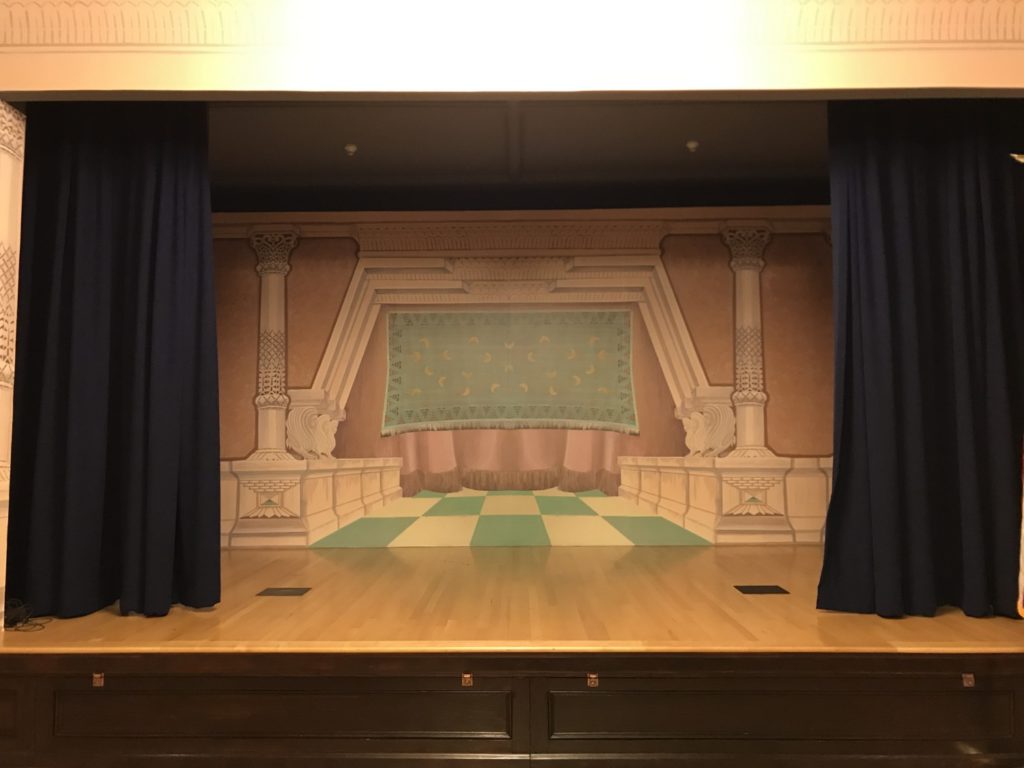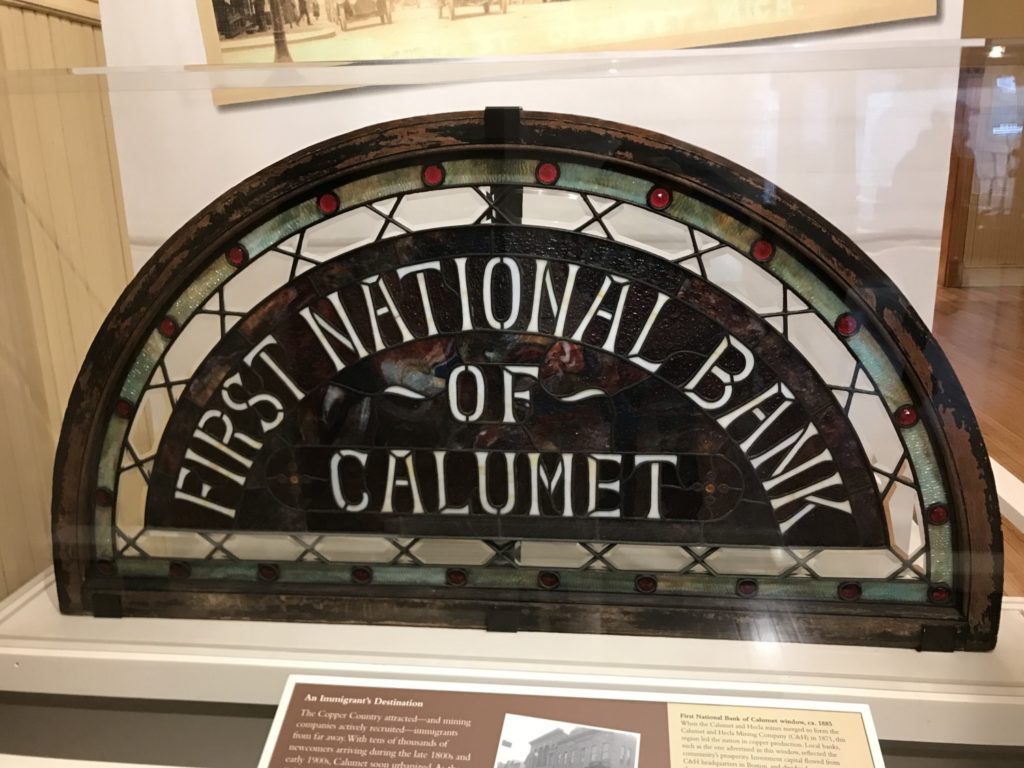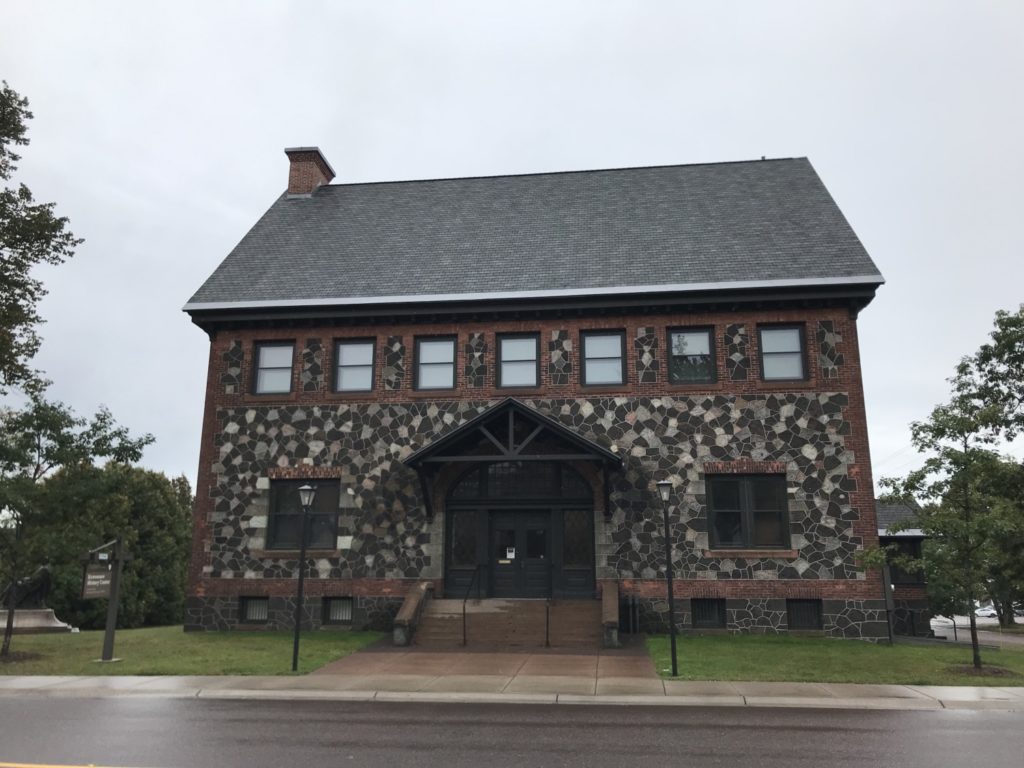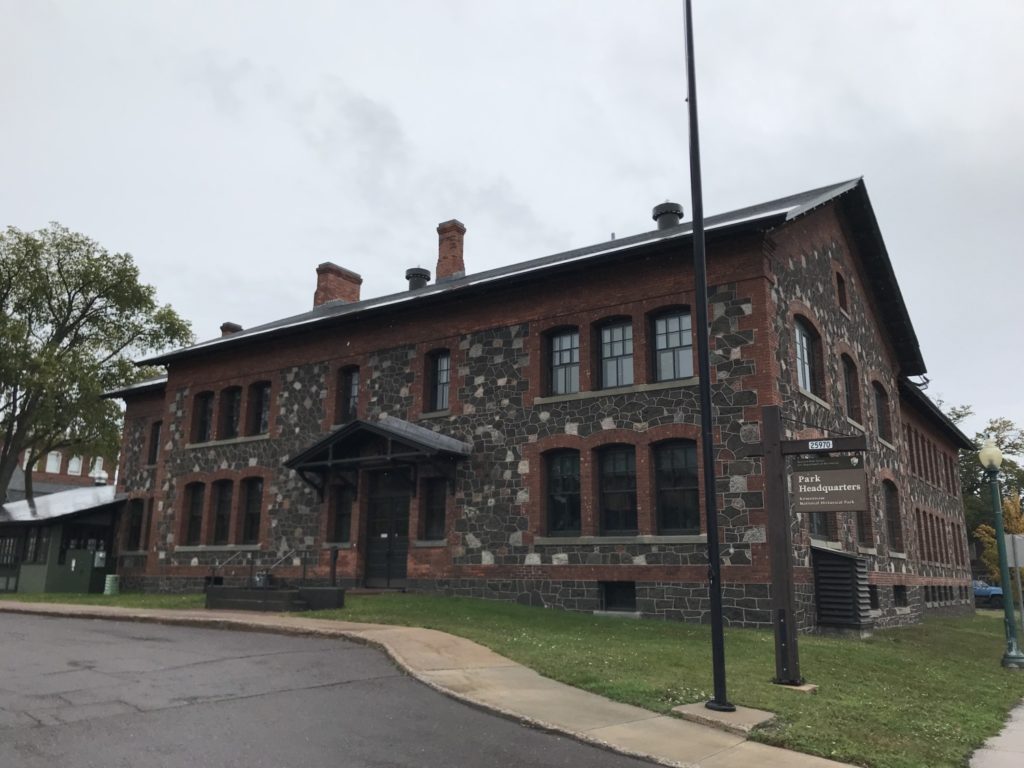After visiting the Grand Canyon of Michigan, Tom and I headed north to see the Keweenaw National Historic Park in the Keweenaw Peninsula. The peninsula is all about copper mining, milling, smelting, and shipping. Every town of any size has some connection to the copper industry. When mining stopped in the 1970’s, the people in the peninsula feared the loss of their heritage. They persuaded Congress to create Keweenaw National Historical Park in 1992. The park preserves and interprets sites, structures, and stories related to copper mining.

Jobs in the copper mines brought thousands of immigrants to the Keweenaw Peninsula between 1843 and 1914. Experienced miners first came from England, Ireland, and Germany. Later immigrants arrived from northern and eastern Europe as well as China and Lebanon. In 1908 Calumet public schools taught children from over 30 countries. The immigrants who came brought a rich diversity in traditions to the area. They left a rich legacy reflected in street signs, restaurant names, and community festivals.
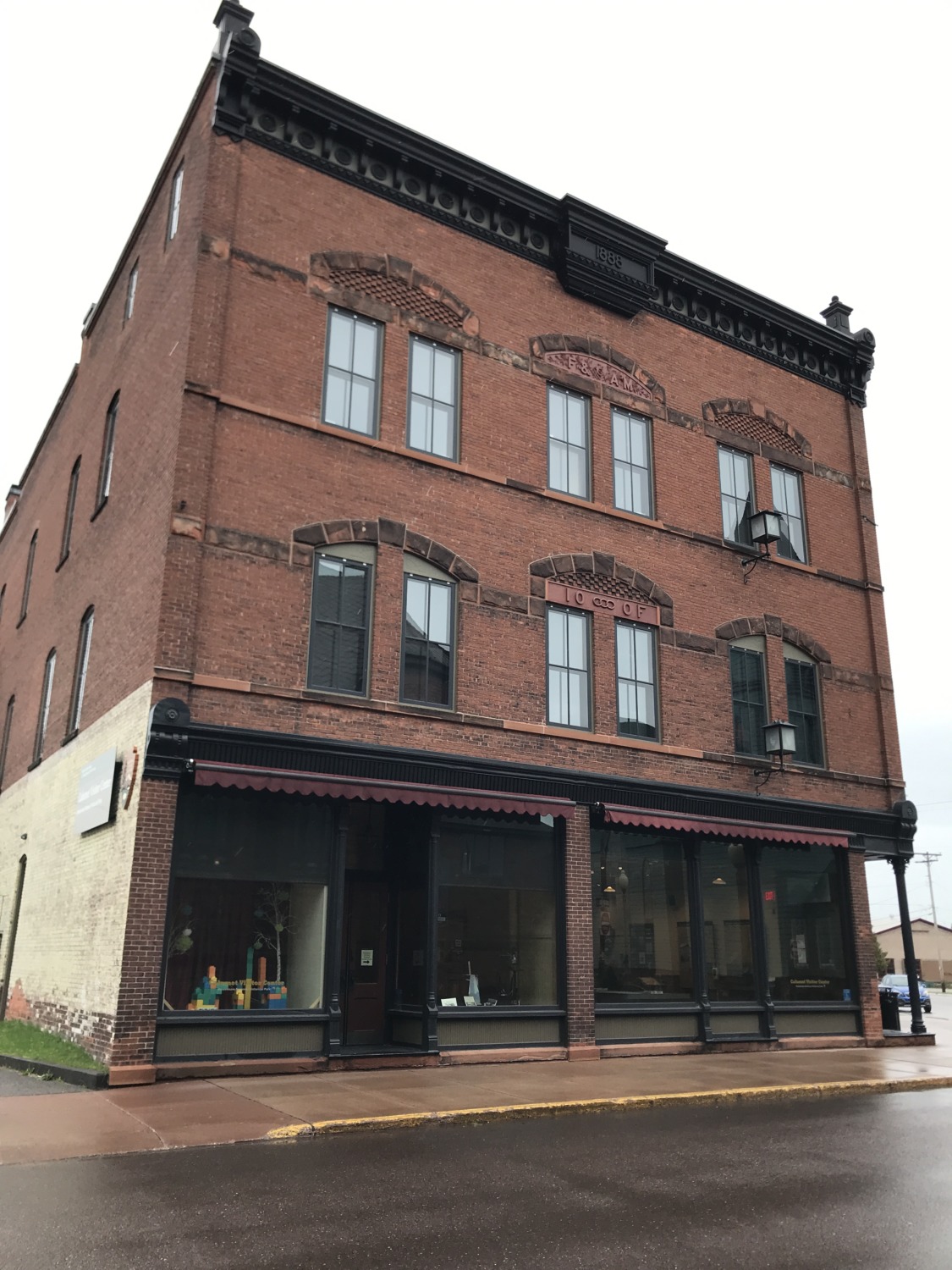
Tom and I started our exploration of Keweenaw National Historic Park at the Calumet Visitors Center. The park is divided into two units, with other heritage areas run by park partners. There is a Quincy Unit, just outside Houghton, and a Calumet Unit. The Quincy Unit includes the huge Quincy Mine and Hoist. There is also the excellent Seaman Mineral Museum on the Michigan Tech campus in Houghton. Tom and I chose what sites we wanted to see, out of the 22 sites that are part of the Historic Park. We skipped the Quincy Mine and Seaman Mineral Museum in order to head to sites further north.
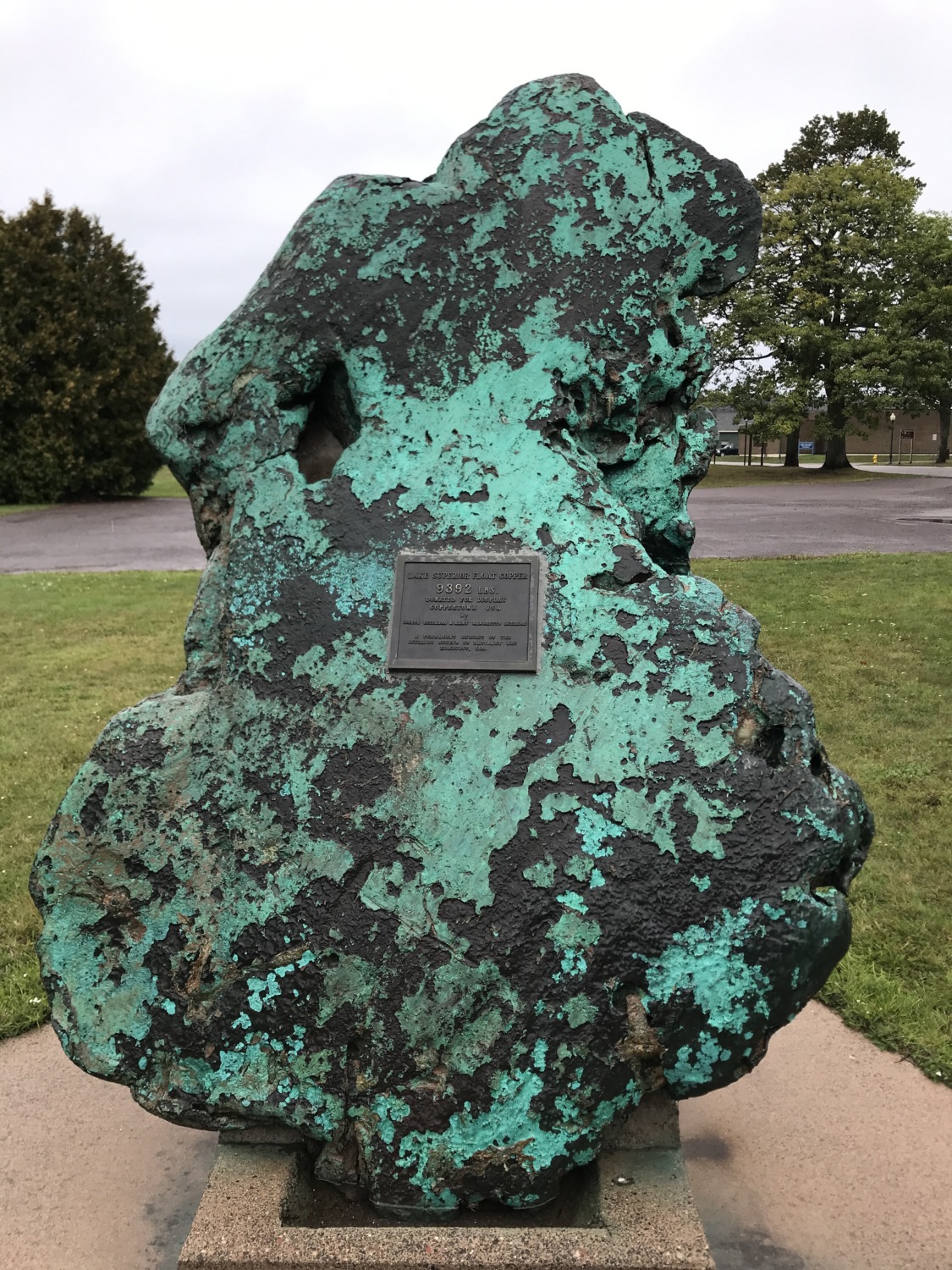
The Calumet Visitors Center is located in the restored Union Building, a former lodge hall jointly owned by the Masons and the Odd Fellows. The three-story building opened in 1889. The ground floor was rented to various businesses, and the two upper floors were used for lodge meetings. The National Park Service purchased and began restoration of the building in 1999.
Tom and I spent some time in the Visitors Center. It was a cold, rainy day and we were glad to be inside. But we needed time to pay attention to the exhibits as well as the building itself. From the pressed metal ceiling and the inlayed parquet floors to the faux marble columns, the building is full of beautifully restored architectural details. We talked to the NPS ranger for a while and looked around the bookstore. I got my NPS stamp in my Passport book.
The Calumet Visitors Center Museum focuses on the lives of the families that came to the peninsula instead of on the actual process of mining. The movie had interviews with third and fourth generation families who shared some of their ethnic traditions. They also talked about the difficulty of making a living in the Keweenaw Peninsula since the mines closed. One person in the movie said, “If you live here, your career is staying here.” In other words, you had to be creative and willing to work at a variety of jobs in order to make a living. The ranger said he was seasonal at Keweenaw and worked at whatever he could find the rest of the year.

After enjoying the Visitors Center, Tom and I walked around the Calumet National Historic Landmark District. We saw the Keweenaw Heritage Center housed in St. Anne’s church, the Coppertown USA Mining Museum, the Copper Country Firefighters History Museum, the Calumet Theatre, and the Italian Hall Memorial Park. We walked down to the Keweenaw History Center and admired the statue of Alexander Agassiz, the President of the Calumet and Hecla Mining Company.

It was all very interesting. We admired the people who came here to work the mines and also the ones who choose to live in the peninsula today. As cold and rainy as it was on the September day we visited Calumet, we could only imagine how miserable the winters might be.
Each of the Keweenaw National Historic Park sites has their own hours and days of operation, so be sure to check their website carefully before you go. During the “summer season,” the Calumet Visitors Center is open from 9 to 5, Wednesday through Sunday. After September, the Calumet Visitors Center is only open Saturdays and Sundays from 10 to 3.

